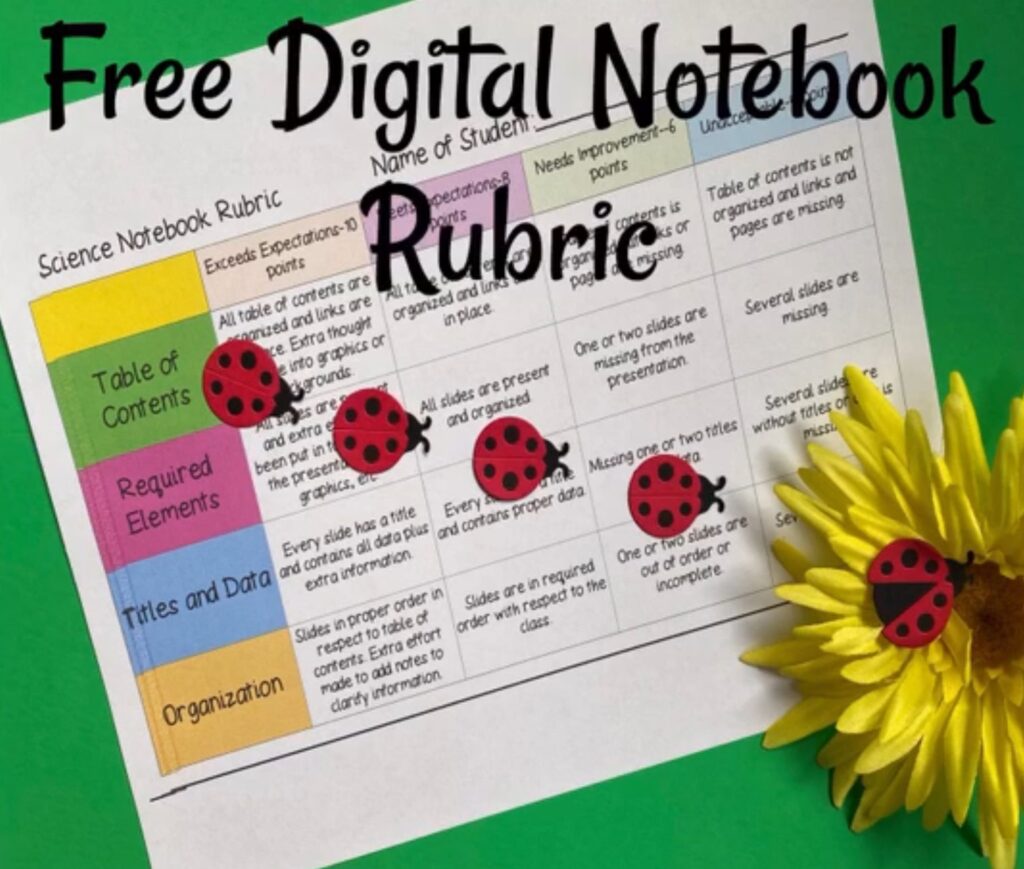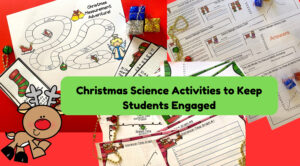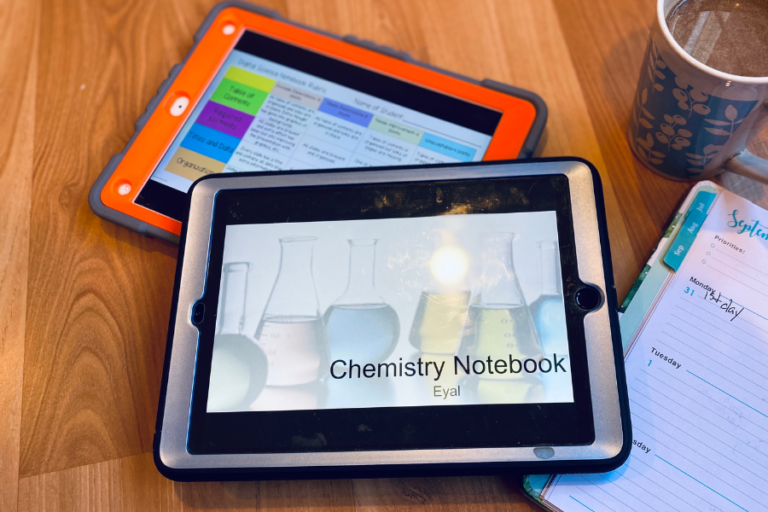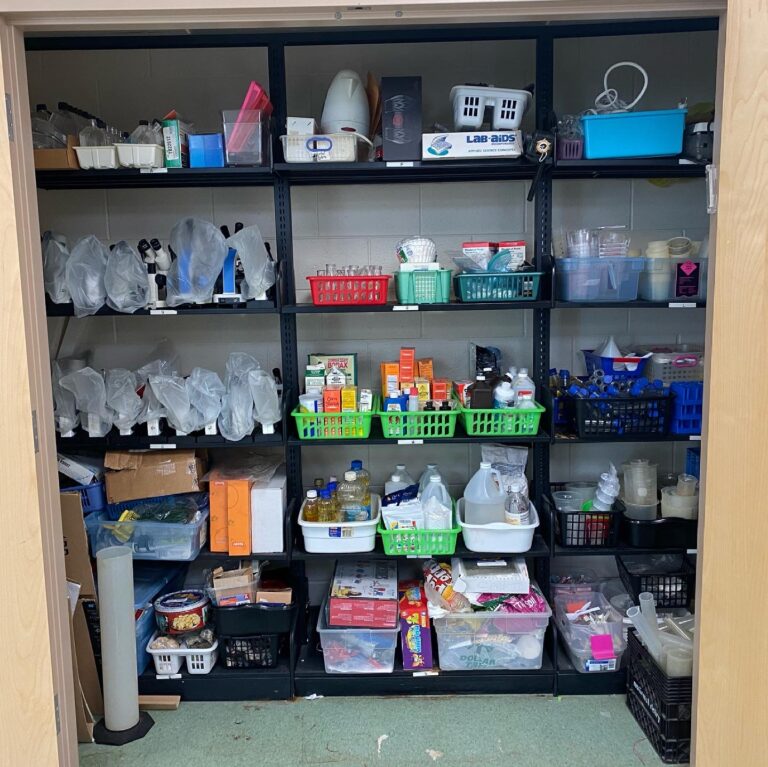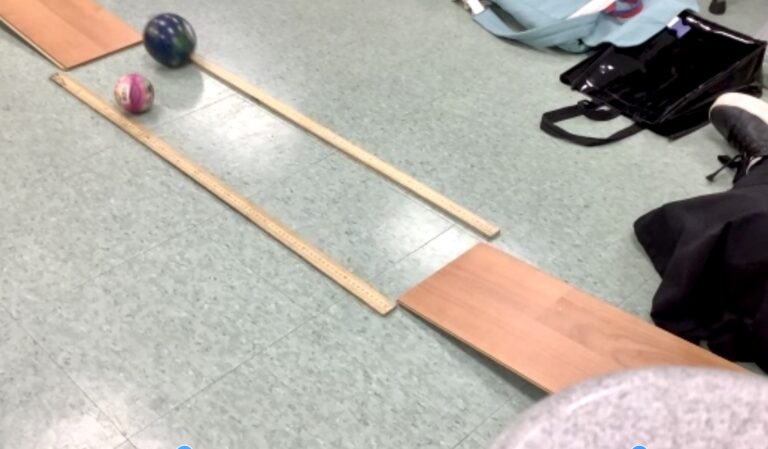Teaching Students Organizational Skills
Teaching students organizational skills is critical and will stay with students long after their time in your classroom.

Teaching Students Organizational Skills
Updated July 4, 2023
I have often had alumni students come back to tell me how much they appreciated my “forcing them“ to do proper Cornell notes and to keep an organized notebook. They tell me that they continued to do them in high school and that makes my heart happy!
What areas of organization can you stress in your science classroom? This will help keep your sanity and help your students in future classes.
Bringing Materials to Class
I’m always boggled as to how a student can travel class to class with no writing utensil! Especially on a test day. I started doing “utensil check-ins“ for 5 or 10 points on their average and boy did that change everything!
Every once in a while, as students walk in, I simply say “utensil check!”. Everybody holds up either their pen or their pencil. Using backwards grading, I simply write down who doesn’t have it and then later I give extra credit to those who did.
Note: You may be thinking that my policy discriminates against students who struggle with organizational skills. After testing this out for many years, I have found that the students tend to remind each other about bringing the materials, so that they can all succeed. This greatly benefits ALL of the students.
I do the same for their science folders and planners. Every once in a while a student says to me “Can we do a planner check today?”. They hold their planners in the air and get their extra points. Organization is rewarded. Win-win!
Keeping the Classroom Space Organized
You need to model organization to get students on board. Label everything. Where should they put empty containers after a lab? Where can they find paper towels? Extra paper? Before you start a lab activity, tell them how to clean up. Always start at the END of each activity as you plan. (Planning Lab Activities for Middle School Science Class)
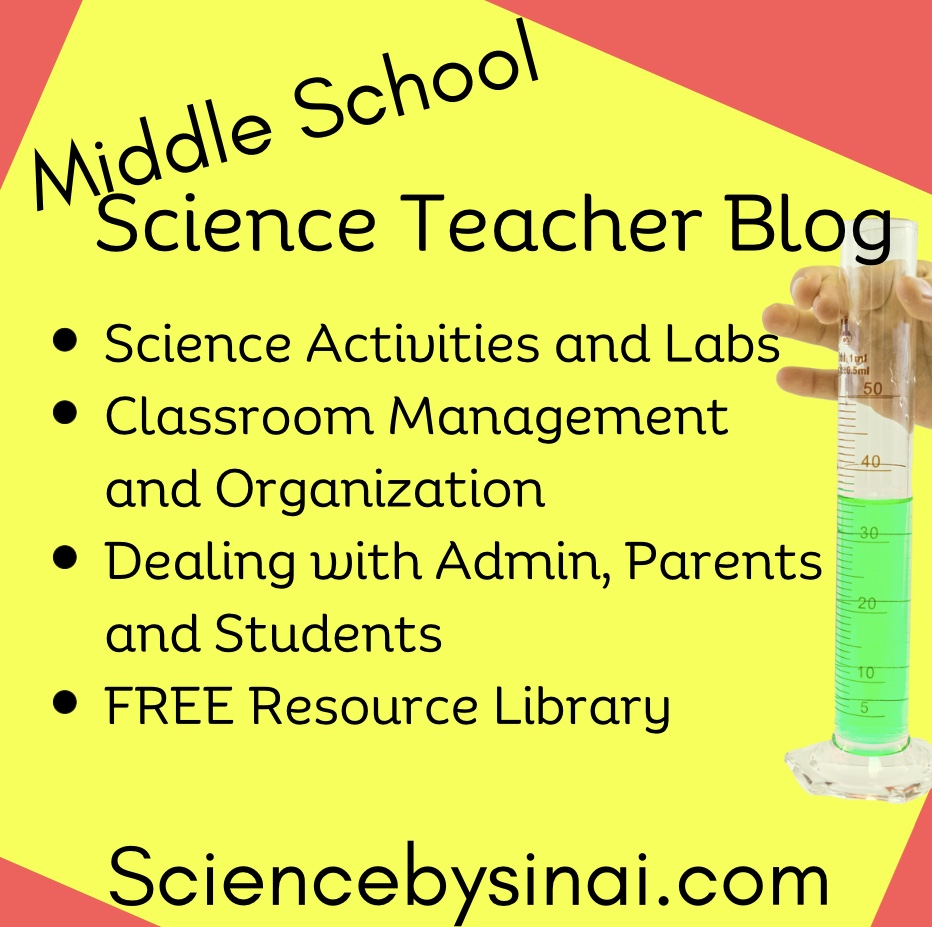
Keep The Science Notebooks Organized
If you subscribe to this blog, you know that I am a big advocate of digital science notebooks. (A Day in My Life Using Digital Science Notebooks) No paper, no ripping spiral notebooks, no binders with papers shoved in. No cutting or pasting.
Been there, done that, and never again!
Students create their unit notebooks on Google Slides. They set up a title page, grading rubric and a table of contents. They add backgrounds, even some gorgeous ones that they create, right from the beginning.
Once they share the Google Slides document with me, I can follow their progress at any time from my iPad or phone. That is an extra level of accountability that I will never give up. They can also save everything to Google Drive and they love going back and looking at their notebooks from years before!
Teaching Students Organizational Skills with Note Taking
I love organized Cornell notes and I push them on the students as early as fifth grade. (I teach fifth through eighth grade science). I give students many templates to choose from or they make their own. Learning to pull out the main points from a text is not always an easy and quickly learned skill. You need to do lots of modeling and practice.
However, once it becomes automatic, it is a life skill!
Taking Notes During Videos
I don’t share videos to just fill time. I search YouTube for good content that is relevant to our unit. I tend to use videos that are less than five or six minutes in length, but filled with good information.
Taking notes from a video is not an easy task and I help the students with video note taking templates. Again, modeling is necessary.
Some students get very stressed trying to take out important information during a quick moving film. I use the following calming method and that has really worked. Since the videos are short, I have students “pancake their iPads” or turn them over during the FIRST viewing. We watch the video all the way through with no note taking. When it’s over, we do a quick recall exercise and then turn their iPads over to watch the video AGAIN. We then go over what they should take away from each video. I make sure to ask questions from the video on the unit test so they stay accountable.
Teaching Students How to Study for Tests
It doesn’t matter what subject you teach, students need to know how to study and own the material. I encourage file cards/flashcards to promote learning science concepts and vocabulary. I don’t give a test for every unit, but I feel learning the skill is important.
A long time ago, I learned the three pile method for studying with flashcards. You start with a full pile of cards and start quizzing yourself. The cards you know “cold” are put into one pile. The ones you “sort of knew” you put in another pile. The third pile is the cards that you “totally forgot”. You take the “cold” pile and set it aside. There’s no need to keep studying with them!
Now you study the remaining two piles and start the procedure all over again with three new piles. Eventually the “cold” pile gets larger and the “don’t know” and “sort of know” piles are reduced. As the piles shrink, and most of the cards end up in the “cold” pile, the students are gaining confidence and the concepts at the same time!
I told the students that when a test is put down in front of them, they should go through the whole test and answer the questions if they know “cold” first. This does two things. This allows students to gain confidence, plus they have now seen the entire test and it doesn’t feel so intimidating. Since I started focusing on test taking and studying strategies years ago, there was a big jump in grades and self-confidence.
Keep Your Projects Well Structured and Organized
I organize my projects into what you could call “small bites”. I give students brainstorming forms, brainstorming sketch forms, daily check-ins and self assessments. This can be seen in my projects such as building Rube Goldberg machines, making electric circuits arcade games, magnet mazes and my symbiosis project. Without this structure, projects can drag on FOREVER with unproductive days and students forgetting materials. Being accountable EVERY DAY makes a big difference.
Conclusion
Teaching organizational skills should be hand-in-hand with the concepts of any discipline you are teaching. Due to the hands-on nature of science, I find organization essential for a calm, stress free student environment. Check out the rest of my blog for other classroom management tips and tricks along with structured science projects for the units you’ll be covering.


